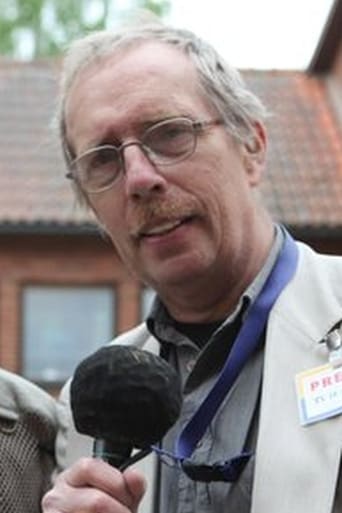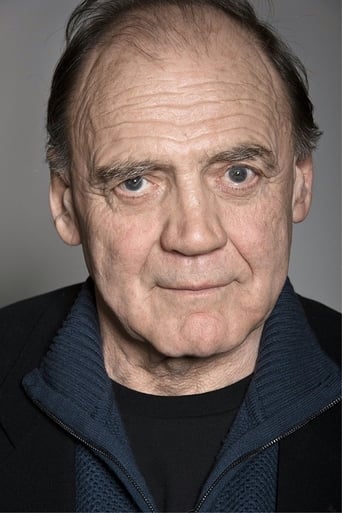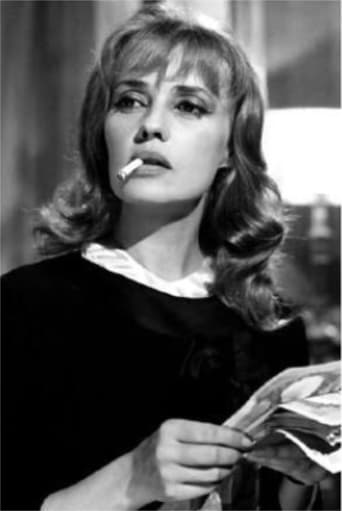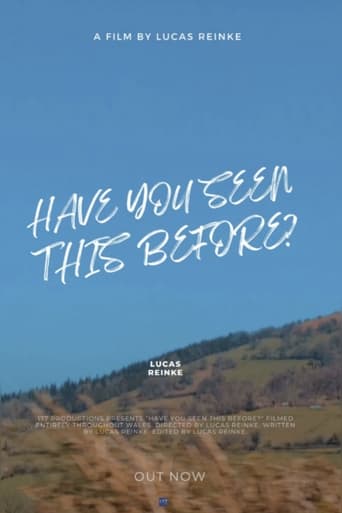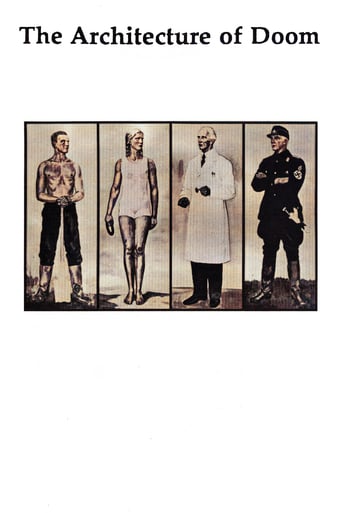

The Architecture of Doom (1989)
Featuring never-before-seen film footage of Adolf Hitler and the Nazi regime, The Architecture of Doom captures the inner workings of the Third Reich and illuminates the Nazi aesthetic in art, architecture and popular culture. From Nazi party rallies to the final days inside Hitler's bunker, this sensational film shows how Adolf Hitler rose from being a failed artist to creating a world of ponderous kitsch and horrifying terror. Hitler worshipped ancient Rome and Greece, and dreamed of a new Golden Age of classical art and monumental architecture, populated by beautiful, patriotic Aryans. Degenerated artists and inferior races had no place in his lurid fantasy. As this riveting film shows, the Nazis went from banning the art of modernists like Picasso to forced euthanasia of the retarded and sick, and finally to the persecution of homosexuals and the extermination of the Jews.
Watch Trailer
Cast
Similar titles
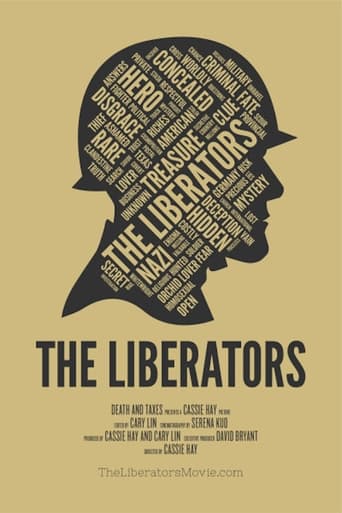
Reviews
Best movie of this year hands down!
Expected more
Admirable film.
A movie that not only functions as a solid scarefest but a razor-sharp satire.
The film approaches the Nazi period from a refreshing angle: the seldom-documented (in film) visions that informed official Nazi aesthetics, given priority by a host of top Nazis who, like their Fuehrer, were failed artists. It offered a number of insights, such as the role played by architectural sketches Hitler had made in his youth and the future propaganda value of gargantuan Greek-influenced architecture (e.g., Reich buildings were designed to decompose along the lines of Roman ruins so as to impress archaeologists centuries later).But the English narration by Sam Gray was so atrocious that it was difficult to separate it from the visual and conceptual qualities of the film itself. Imagine a Beethoven symphony where the strings are played without passion and several beats off from the other sections no reflection on the composer, but still hard to listen to. So great was the impact of the narration, in fact, that I expected to see ratings averaging 5 or 6 (my vote) on the IMDb site. Gray's uneven, indifferent inflection applied to a script he clearly (to judge by his mispronunciations) had not familiarized himself with gave the film an amateurish quality that it surely did not have in the original Swedish or the German versions. Moreover, the English translation, done by a German, was awkward in places.As tragic an oversight as the choice of the English narrator was, Peter Cohen and the producers ultimately retain responsibility for letting it pass, especially since Cohen had worked in English before. Any educated native English-speaker asked to review it would have cautioned them, after a single listening, not to underestimate how much the narration undermined its effectiveness. Engaging another narrator surely would not have broken the budget.Had I the choice, I'd see this film again with the Swedish or German narrations, subtitled in English.
This fast moving film postulates that the ideas that the Nazi hierarchy held about art influenced the drive to cleanse the race and make it pure. The Nazi's loved the classical ideal and hated anything that was impressionistic or modern and used it as proof of genetic impurity. The film recreates a lecture that toured Germany which showed how modern or degenerate art was based on deformed people. We see the images from the degenerate art and how they are compared to the mental and physically handicapped. This, the film argues, allowed the Nazis to then begin to sculpt the German people into the perfect physical being through murder (after all they are less then human).Its an interesting idea but I don't think it was as big a deal as the film makes it out to be. Certainly there was the drive to create the perfect little Nazi, but I don't think it was as formalized as the movie says. I think the nice ideas of art and race were less intertwined as this film thinks. That said this movie is kick in the pants and in the head. The ideas it puts forward were probably at the very least operating on a subconscious level as a form of positive re-enforcement. Its all very plausible, which is scary.Definitely worth seeing for anyone wanting to further color their understanding of Nazi ideas. You may not wholly agree with whats presented, but it will make you think, which isn't a bad thing.
The raise and fall of the Nazism, in a artistic and aesthetic view, is brilliantly showed in this film. I regret only that the economic situation of Germany is not presented at the same time, to give a complete big picture of Germany along this dark period of history. The focus is the megalomaniac dream of a sick leader of rebuilding the world in a standard of beauty. This is exposed magnificently in this stunning documentary. Probably it is one of the best ever made. It should be part of the curriculum of any high-school around the world. Indeed, the history teacher of my daughter recommended their students to watch this fantastic movie as a complementary of their class. The raise and fall of the nazism, their concern with arts, the megalomaniac dream of Hitler with pure race and a beautiful and aesthetic Germany first and then the world, are amazingly well presented in this great documentary. The research of Peter Cohen is great, and the clear, didactic and logical presentation gives a class of history to the viewer. Outstanding and remarkable. Two points along this film called mainly my attention: the first one is the dream of Hitler in designing a Berlin more beautiful than Paris (with an Arc of Triumph larger twice than the French one). The images in the end of the documentary shows how it ended. If the viewer has a chance to watch also Roberto Rossellini's movie 'Germany Year Zero' (of 1947), he will have a chance to see the rest of this megalomaniac dream. The other point was the initial preoccupation of Hitler in not dropping bombs in Greece, due to its historical patrimony to mankind. Unfortunately, recently in Iraq, the same respect was not demonstrated, and we watched on TV the destruction of a great patrimony of mankind, with museums, archaeological fields and other historical monuments being bombed. In Brazil, this film is spoken in German with subtitles in Portuguese. My vote is ten.Title (Brazil): "Arquitetura da Destruição" ("Architecture of the Destruction")
An interesting idea (Nazism as an aesthetic movement) fairly convincingly presented, although sometimes it stretches to make a point (eg, the movie tries to make more of the use of Zyklon-B for pest as well as human extermination than the interesting coincidence it seems to be). The periodic sequences of similar looking Nazi art get boring after while, which is the point, but overmade. The narration is rather monotonous; it's possible that impression is the result of having to read it.
